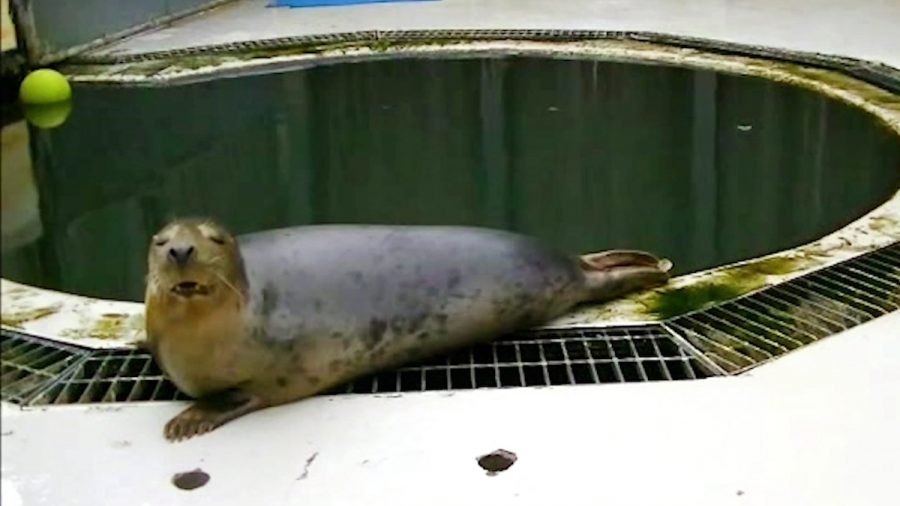Researchers in Scotland have taught a group of seals to mimic human speech sounds and “sing” tunes including “Twinkle Twinkle Little Star.”
In video footage released by researchers at the University of St. Andrews, three trained gray seals displayed their ability to reproduce parts of sound sequences, such as the “Star Wars” theme and “Twinkle Twinkle Little Star.”
WATCH: Seals sing sections of “Twinkle, Twinkle, Little Star” and other tunes in video released by researchers at the University of St. Andrews in Scotland. Read more here: https://t.co/FG8sT4GcOz pic.twitter.com/ahYBuo2twA
— AP Europe (@AP_Europe) June 21, 2019
“I was amazed how well the seals copied the model sounds we played to them,” lead researcher Dr. Amanda Stansbury told BBC News. “Copies were not perfect but, given that these are not typical seal sounds, it is pretty impressive.”
However, the research team’s findings, published June 20 in the journal Current Biology, are not suggesting humans will be able to have conversations with seals anytime soon.
“While seals can copy such sentences, they would not know what they mean,” professor Vincent Janik, director of the Scottish Oceans Institute at St. Andrews University, told the BBC.
“We would have to investigate whether they are able to label objects vocally, which is a key requirement for actually talking about things.”
Janik said the current findings could provide insights for the further study of human speech disorders, particularly in speech development.
Rarest Whale on Earth Recorded Singing for the First Time Ever
The North Pacific right whales, unlike some of their very musical relatives, aren’t exactly known for singing magical songs.
New findings published by the researchers of the National Oceanic and Atmospheric Administration (NOAA), however, suggest that the rarest whale of them all, the eastern North Pacific right whale, is able to sing.

“During a summer field survey in 2010, we started hearing a weird pattern of sounds,” explained marine mammal expert Jessica Crance of NOAA Fisheries’ Alaska Fisheries Science Center. “So we started going back through our long-term data from moored acoustic recorders and saw these repeating patterns of gunshot calls.”
The gunshot calls, as the name suggests, are calls made by right whales that sound like a gunshot.
First Recording of North Pacific Right Whale Song #NPRightWhalehttps://t.co/e4vFIEqtHh pic.twitter.com/OoIaWp4UAY
— NOAA Fisheries AK (@NOAAFisheriesAK) June 19, 2019
“I thought these patterns look like song. We found them again and again, over multiple years and locations,” said Crance. It took her team until a voyage in summer 2017 to actually capture a right whale song with a sighting of the male making it.
“We can now definitively say these are right whales, which is so exciting because this hasn’t been heard yet in any other right whale population,” said Crance.
Right whales got their name because it was considered the “right” ones for whalers to hunt. They are very slow moving, easy to approach, live close to shore, and their carcasses stay buoyant after they are killed, making them the most desirable prey. According to NOAA, the species was so heavily harvested that its population has not recovered, despite being protected for over 50 years. The U.S. Marine Mammal Commission estimates only about 30 eastern North Pacific right whales remain today, mostly sighted in the southern Bering Sea.
VIDEO: A North Atlantic right whale and its calf are spotted off the United States’ southeast coast.
North Atlantic right whales are among the most endangered whale species – with only an estimated 400 left in the world
???? @NOAA pic.twitter.com/s2nWgwWgAJ
— AFP news agency (@AFP) April 17, 2019
Why do right whales sing in the first place? Crance hypothesized that these songs are for reproductive purposes. “We have direct evidence of male right whales singing, and we think this may be exclusive to males,” she said. “But we have very limited data on vocalizing female right whales.”
With only 30 animals, finding a mate must be difficult.”


